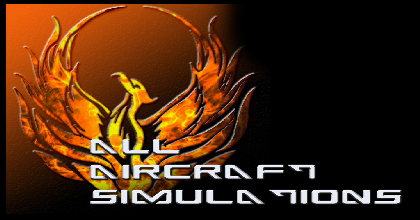14.07.2010, 09:24
I'd like to share a simple technique I use for making tileable textures. This is assuming you already know how to use GIMP and/or Photoshop. For this tutorial I'll be making a mountain texture, using a screenshot from Google Earth. It will be 512 x 512 pixels (This also applies to any size texture).
I use GIMP, so will refer to that here - same should apply for Photoshop
To make a texture tileable, it has to appear to continue naturally from tile to tile - side to side and top to bottom. Therefore only two adjacent sides need to be "carried over", and with the selection tool and some erasers, you can come up with some wonderful results.
Start by opening your image with GIMP/Photoshop, and select a section 768 x 768 pixels and copy it. Now go to File, select New (the dimensions should already be entered, make sure it's 768 x 768), and press okay. Paste the image. You can now close the Google Earth image, no need to save changes.
![[Image: Mount0.jpg]](http://i272.photobucket.com/albums/jj198/HH_Blaze/Mount0.jpg)
(image reduced to 50% for size here only)
![[Image: Mount1.jpg]](http://i272.photobucket.com/albums/jj198/HH_Blaze/Mount1.jpg)
Now we're going to select the "base" layer of our texture (#1), 512 x 512 pixels, starting in the top right corner, and then copy it. Once again, create a new template (512 x 512), but this time create a new layer first and then paste the copied image there. Now create 2 more new layers (#'s 2 & 3). These will be the "carry over" parts of the texture.
It should now look like this:
![[Image: Mount2.jpg]](http://i272.photobucket.com/albums/jj198/HH_Blaze/Mount2.jpg)
Layer #2 will be placed at the top and Layer #3 to the left of the new template.
Now it's time to break out the erasers. I use a custom brush - I can make it any radius I wish and also edit it's hardness - make sure hard edge is unchecked. It's easier to have layer #3 off while working on #2, but keep #2 on when working on #3, it needs to blend into both the other layers.
The idea is too blend the "carry over" layers into the base layer and eachother, while keeping a natural look to the finished texture. You may also need to lower opacities and/or toggle on/off a layer to see what's what (where a line of trees may be, or rock surface...etc.).
Layer#1
![[Image: Mount3.jpg]](http://i272.photobucket.com/albums/jj198/HH_Blaze/Mount3.jpg)
Layer#2
![[Image: Mount4.jpg]](http://i272.photobucket.com/albums/jj198/HH_Blaze/Mount4.jpg)
Layer#3
![[Image: Mount5.jpg]](http://i272.photobucket.com/albums/jj198/HH_Blaze/Mount5.jpg)
When you're happy with what you've got, flatten the image and save as .tga file - make sure RLE Compression is unchecked!
Finished texture
![[Image: Mount6.jpg]](http://i272.photobucket.com/albums/jj198/HH_Blaze/Mount6.jpg)
4 tiles x 4 tiles
![[Image: Mount7.jpg]](http://i272.photobucket.com/albums/jj198/HH_Blaze/Mount7.jpg)
I hope you find this little tutorial helpful. I would like to thank Kevinp for his supberb tutorials, and advise newbies (like myself, lol) to download his "Textures for Beginners Tutorial".
I use GIMP, so will refer to that here - same should apply for Photoshop
To make a texture tileable, it has to appear to continue naturally from tile to tile - side to side and top to bottom. Therefore only two adjacent sides need to be "carried over", and with the selection tool and some erasers, you can come up with some wonderful results.
Start by opening your image with GIMP/Photoshop, and select a section 768 x 768 pixels and copy it. Now go to File, select New (the dimensions should already be entered, make sure it's 768 x 768), and press okay. Paste the image. You can now close the Google Earth image, no need to save changes.
![[Image: Mount0.jpg]](http://i272.photobucket.com/albums/jj198/HH_Blaze/Mount0.jpg)
(image reduced to 50% for size here only)
![[Image: Mount1.jpg]](http://i272.photobucket.com/albums/jj198/HH_Blaze/Mount1.jpg)
Now we're going to select the "base" layer of our texture (#1), 512 x 512 pixels, starting in the top right corner, and then copy it. Once again, create a new template (512 x 512), but this time create a new layer first and then paste the copied image there. Now create 2 more new layers (#'s 2 & 3). These will be the "carry over" parts of the texture.
It should now look like this:
![[Image: Mount2.jpg]](http://i272.photobucket.com/albums/jj198/HH_Blaze/Mount2.jpg)
Layer #2 will be placed at the top and Layer #3 to the left of the new template.
Now it's time to break out the erasers. I use a custom brush - I can make it any radius I wish and also edit it's hardness - make sure hard edge is unchecked. It's easier to have layer #3 off while working on #2, but keep #2 on when working on #3, it needs to blend into both the other layers.
The idea is too blend the "carry over" layers into the base layer and eachother, while keeping a natural look to the finished texture. You may also need to lower opacities and/or toggle on/off a layer to see what's what (where a line of trees may be, or rock surface...etc.).
Layer#1
![[Image: Mount3.jpg]](http://i272.photobucket.com/albums/jj198/HH_Blaze/Mount3.jpg)
Layer#2
![[Image: Mount4.jpg]](http://i272.photobucket.com/albums/jj198/HH_Blaze/Mount4.jpg)
Layer#3
![[Image: Mount5.jpg]](http://i272.photobucket.com/albums/jj198/HH_Blaze/Mount5.jpg)
When you're happy with what you've got, flatten the image and save as .tga file - make sure RLE Compression is unchecked!
Finished texture
![[Image: Mount6.jpg]](http://i272.photobucket.com/albums/jj198/HH_Blaze/Mount6.jpg)
4 tiles x 4 tiles
![[Image: Mount7.jpg]](http://i272.photobucket.com/albums/jj198/HH_Blaze/Mount7.jpg)
I hope you find this little tutorial helpful. I would like to thank Kevinp for his supberb tutorials, and advise newbies (like myself, lol) to download his "Textures for Beginners Tutorial".
